#Natural dye
Text
More natural dyes! I honestly love stuff like this so much.
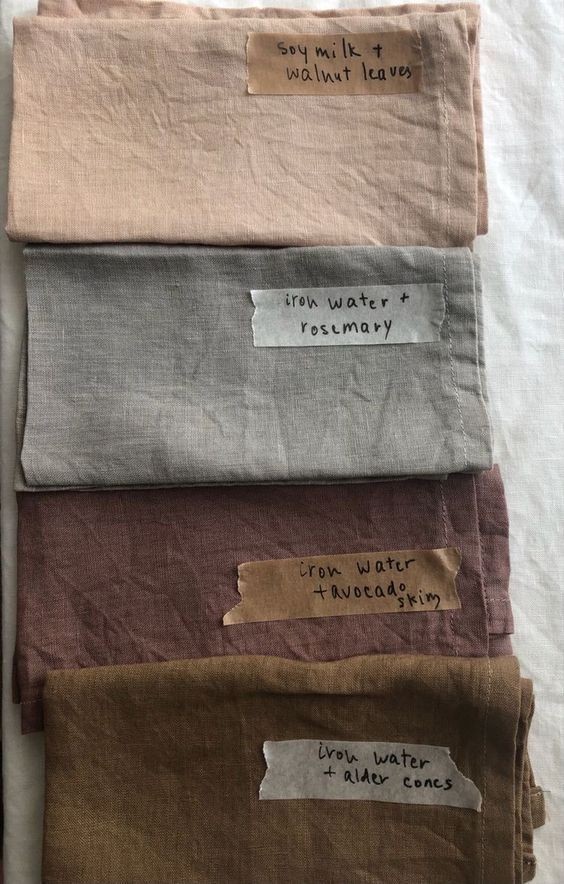
#game of thrones#asoiaf#asoif/got#a song of ice and fire#house of the dragon#headcanon#fashion#hotd#asoiaf books#asoiaf fic#asoiaf fanfic#asoiaf fanart#asoiaf fandom#got fandom#got#got fic#got fanfiction#got fashion#natural dye#medieval dyes#natural dyes#dyes#medieval#medievil#medieval dye
1K notes
·
View notes
Text
Lately I have been obsessed with the concept of using mushrooms and lichen to dye fibers with. I came across the Mushroom Color Atlas, created by Julie Beeler and her team, which is a wonderful reference and so so beautiful. I could not have imagined the colors you could get with mushrooms, especially the blues and purples. Each color will tell you the fiber the color was achieved on, the mordant used, the weight of mushroom to fiber, the freshness of and parts of mushroom used, the temperature the dye baths were brought to, and the period of time it was on heat, and the acidity the bath was brought to, if you’re interested in the process. Or you could just look at the amazing array of dye and pigment that were created by mushrooms
427 notes
·
View notes
Text

New entry for my list of pleasant smelling dye materials--sage. Starts off smelling like you'd think (which is already good) but by the end smells like some kind of lemom ecinacea tea.
(Other good smelling dyes include chamomile and thyme. Neutral/no smell dyes include onion skin and avocado pit or peel)

#really appreciated today due to bad migraine#smells so nice#yields yellows and greebs#greens*#natural dyeing#natural dye#sage
95 notes
·
View notes
Text

帯を織り始めました。
I've just started to weave obi.
240 notes
·
View notes
Text
My pokeberry dye project is dry!
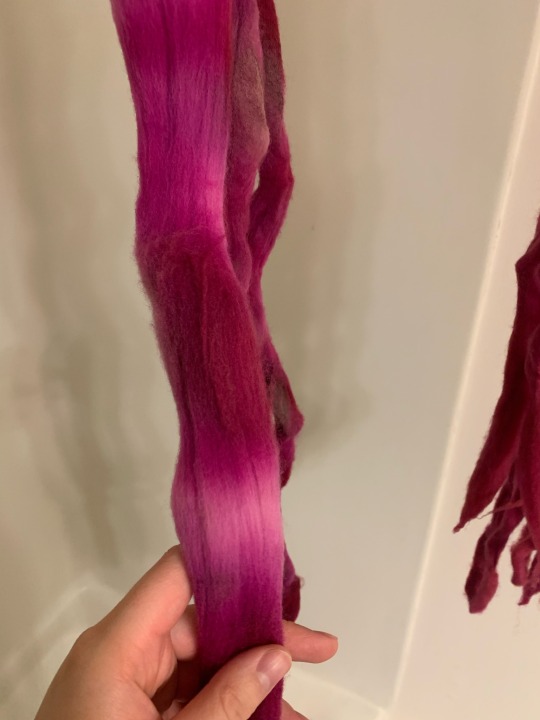

Above is the finished product- on the left is some white merino dyed with the juice of the berries, and on the left is some greyish merino (old faded natural dye project) over dyed with the skins and seeds.
More images and information on the process under the cut:
What I did:
- Pick pokeberries. Some were plump and ripe, others were more like raisins. They were all pretty full of pigment though.
- Mash berries with gloved hands. Strain the juice out (I used a cheesecloth) into one container and place the skins and seeds in another.
- Add 1 part distilled white vinegar to one part berry juice. For the skins and seeds, I poured the vinegar over them until they were just covered and let them soak overnight at room temperature.
- Strain out the seeds and skins from the vinegar- when I did this, the skins were translucent as all the pigment had gone into the vinegar.
- Add to mordanted wool. I used alum at 12% the weight of the wool, heated up to steaming without boiling and held there for a couple hours before cutting the heat and letting cool overnight. My wool was unevenly mordanted, which I think is partly why it dyed unevenly.

- Heat the dye bath over low heat until it’s steaming but not boiling. Once it got hot, I turned the heat off and covered with a lid to let it cool slowly overnight.
- Remove from the dye bath and lay out in a tray for an hour or so. Apparently this is to oxidize the dye, though I saw no significant change in color.

- Rinse and dry
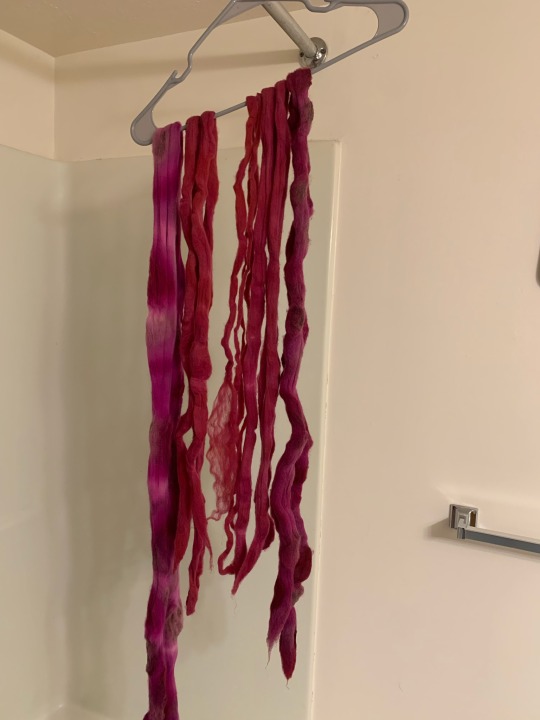
I’m very happy with how this came out! I do wish I’d strained with more layers of cheesecloth since I still had some small bits that have settled into my wool, but they should fall out when I spin. I think my wool dyed unevenly due to a combination of uneven mordanting and being compressed into a braid.
Bonus: why you need gloves… this was after sticking my hand in to press the wool down into the dye bath. It took several washes to mostly fade 🤠

EXTRA bonus: some wool I dyed with pokeberries two years ago!
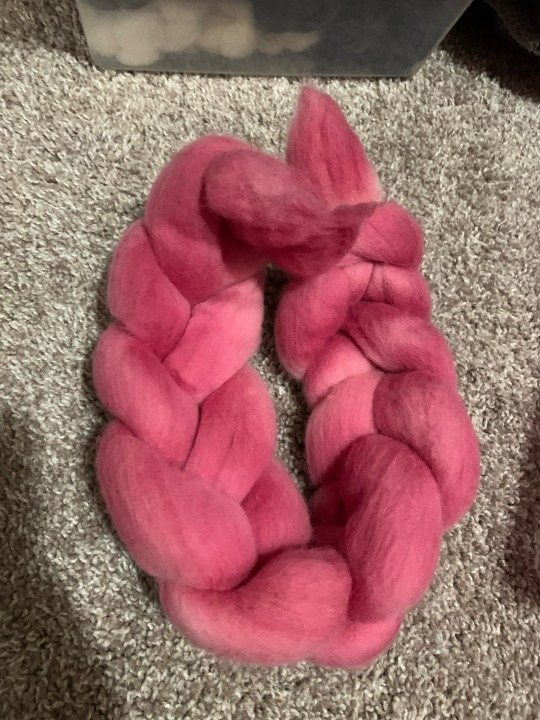
196 notes
·
View notes
Text
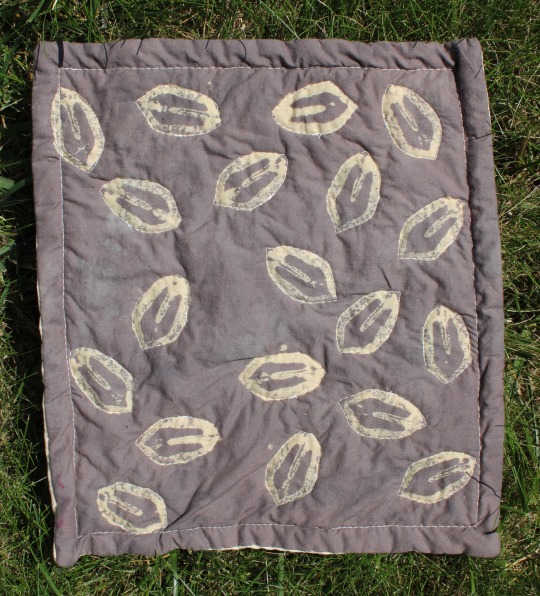
mini quilt using a walnut as a stamp for bleach, the fabric is dyed with walnuts as well! just a tiny little thing
203 notes
·
View notes
Text
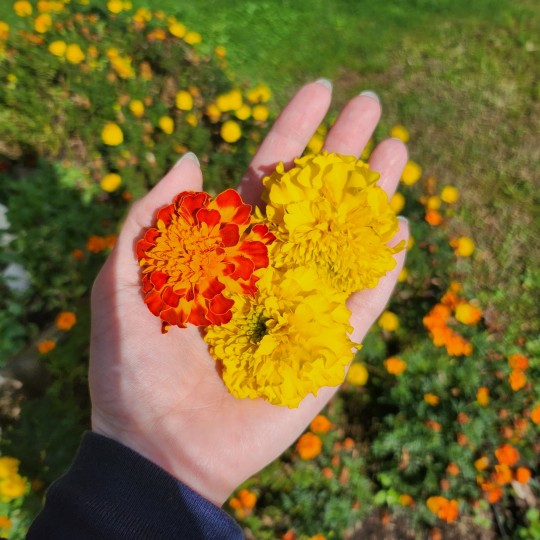
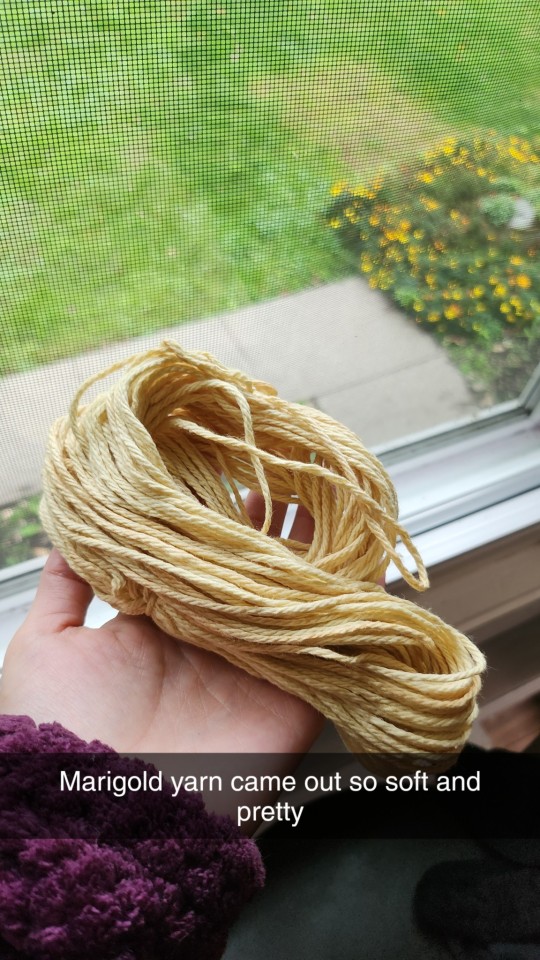
I dyed some cotton yarn with my mother's marigolds
The color came out a very soft yellow. Feels a little nostalgic
I used no mordant this time, as an experiment
131 notes
·
View notes
Text

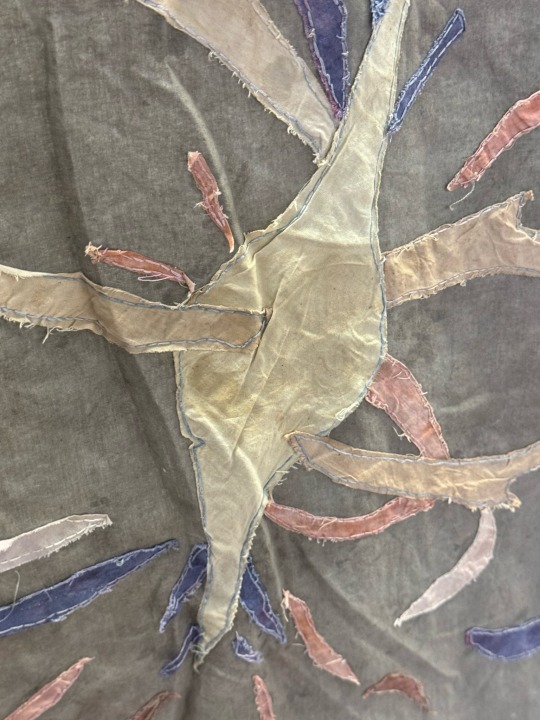
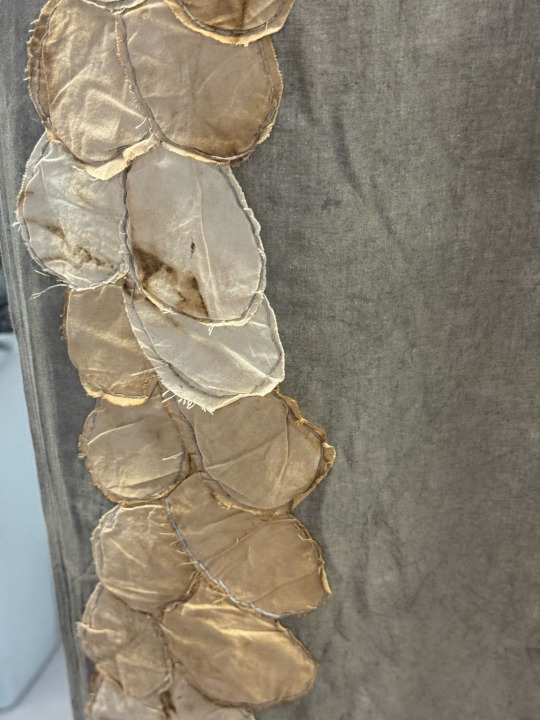
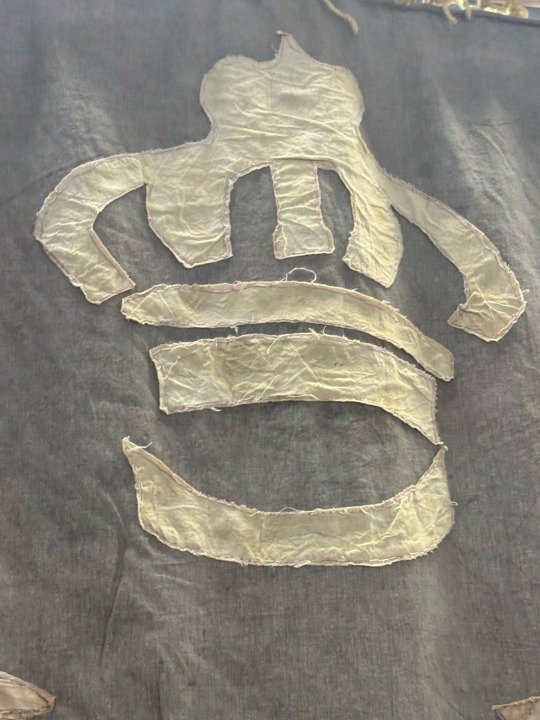
My fiber arts final! This is what I was working on instead of any of my normal illustration. It’s a Torah ark cover— a parochet— and it’s meant to commemorate the Simchat Torah Pogrom. The bit in the middle is a supernova, while the bits at the sides are meant to be either grain or challah, representing the kibbutzim. The Hebrew reads “We will dance again,” in reference to Mia Schem. All naturally dyed. Anyone clowning in the notes will be immediately blocked.
IMAGE ID: A series of photographs of a curtain hung in front of a wall. The curtain has a grey background and a number of appliqué pieces sewn on with embroidery floss. In the center is the image of a supernova and it’s framed by pillars of wheat like brown leaves on each side. On the top is a yellow crown, while on the bottom is the Hebrew: עוד נרקוד שוב. The Hebrew lettering is in pink and is attached with a pale yellow satin stitch. The first photograph is of the entire piece, while the other three are detail shots of the supernova, the wheat, and the crown. END ID.
#my art#sewing#embroidery#appliqué#judaica#parochet#October 7#jumblr#Jewish#simchat torah pogrom#am yisrael chai#fiber arts#natural dye
45 notes
·
View notes
Text
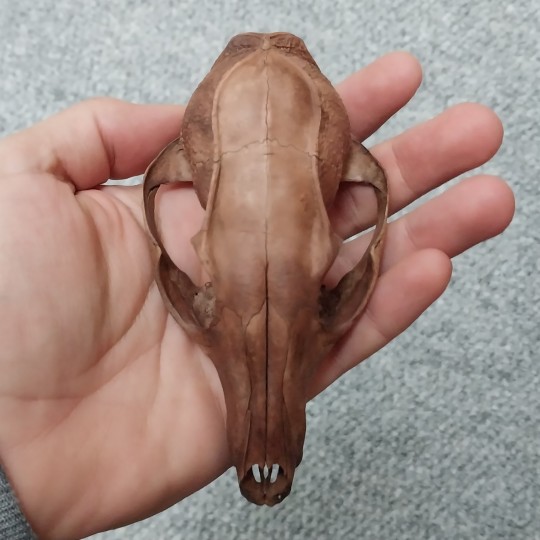

Gray fox skull dyed with pisolithus fungus
144 notes
·
View notes
Text
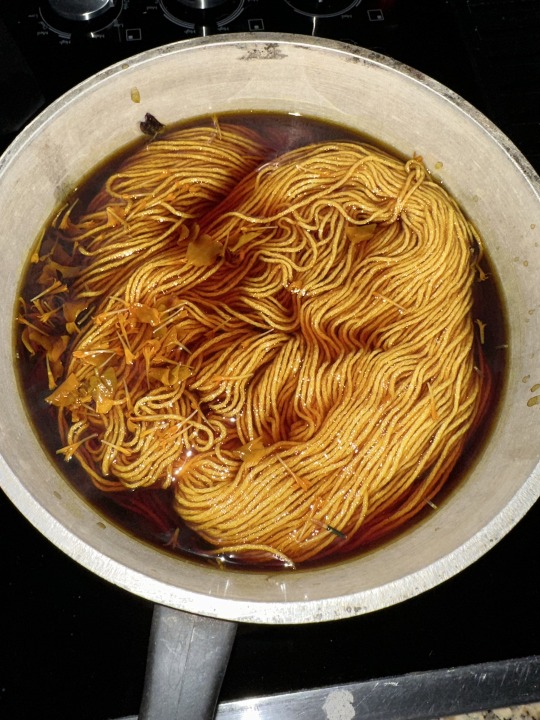
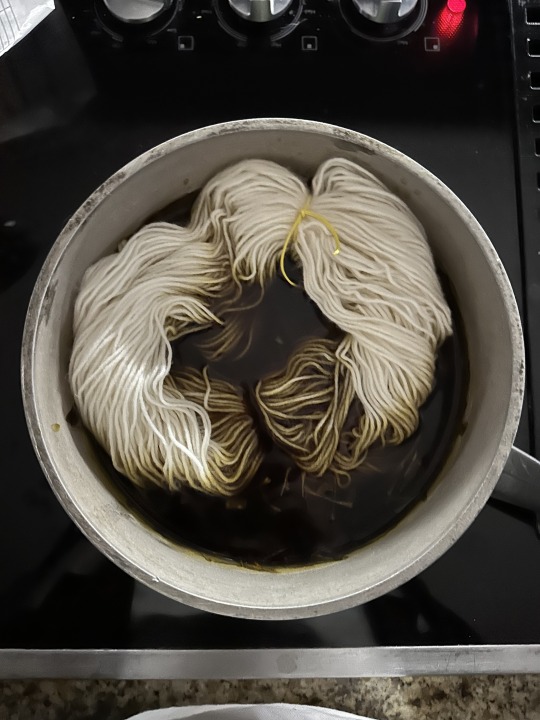
Marigold yarn in the works!
#yarn#artists on tumblr#fiber arts#crochet#knitting#hand dyeing#natural dye#hand dyed yarn#floral#flowers#marigolds#botany
74 notes
·
View notes
Note
Hello! I love your blog bc it helps me a lot with writing and crafting. Thank you so much for making it!
Are there any patterns that deal with poison? Either in the pattern or in the dyeing process?
Even if there's not I'm glad you and this blog exist 💗
(anon continues) Poison in the dyeing process, like when green dresses were dyed with copper arsenite and it was extremely deadly.
Or a pattern of someone being poisoned, like a historical/folktale.
_______________________________________
Thank you for your kind words <3 I tried to keep things organized but the subject is huge so my of the top of my head answer is going in many directions. I hope you'll still find what you need :3
I'll briefly cover here dyes and (pigments), poison motifs, real life and supernatural poisonings. Buckle up we've got a long post ahead!
____ ABOUT DYE
Tbh I had to think for a moment because I don't recall major "poison" stories linked to dyes in Japan, be it fictionous or real (yet that doesn't mean none ever happened, especially considering Japan's history of industrial poisonings...).
Most gruesome details in the fabric industries I know of are about the horrific life & work conditions of female laborers in spinning mill manufactures (as in many countries, Japan industrialization process was ghastly...).
If potters and dyers had excellent practical knowledge, chemistry as a science officially started kind of late in Japan as it was not a local interest, and as rangaku (study of Western knowledge) often favored other subjects like medicine or warfare.
So, until the introduction of aniline dyes (not textile related, but this article about the use of synthetic dyes in ukiyoe printing is super interesting), Japanese worked with "natural" dyes, like ai (indigo) which was the most used during Edo period.
As with any ingredient, being natural doesn't equal safety. Some mixtures could be quite potent/foul, and process could be dangerous. Plants and minerals base ingredients could be toxic (cinnabar and orpiments were then used as paint pigments, and lead could be found in make up), as were mordants used to set colors.
If you want to easily overview which ingredients were used to create colors, I recommand browsing [Irocore] which presents colors with explanation in English in their database (pick a color then scroll down).
Not related to poison, but ai (indigo) is traditionally prepared in aigame/enormous floor set jars I find utterly terrifying:
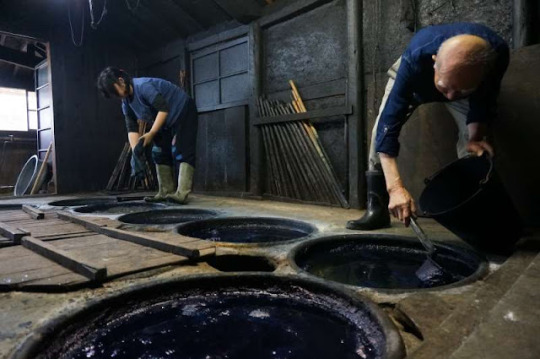
I don't know if this tidbit can help you, but some dyes and mordants actually damage the fabric overtime, leaving them brittle (silk desintegrates after a while which is a huge issue in textile conservation).
____ POISON MOTIFS
Concerning "poison" themed patterns, none would be actually used traditionally on a kimono or an obi beside novelty items ^^;
For example, many plants can be toxic, but I don't see them set as pattern for this property - they'd rather refer to a poem, be a symbol of the passing of seasons etc. Fuji (wisteria) can be quite harmful, yet it's a beloved traditional motif in Japan.
You have much more chances to find pattern with kujaku (peacock) which are thought to be impervious to poison in Buddhism, than say venomous mukade (centipede) or the horrific ômukade (a youkai I covered in a folktale).
Snakes like the habu and mamushi are dangerous, but if used as pattern snakes are most often auspicious and linked to rain dragons or goddess Benzaiten.
If you squint hard, toxic fugu could count as poison pattern, but such a seasonal delicacy as a motif would mostly underline wealth (as those fishes are pretty expensive as they are prepared by specialized chefs), a kind of carpe diem spirit, or just a fun pattern because fugu balloon shape is cute ;)
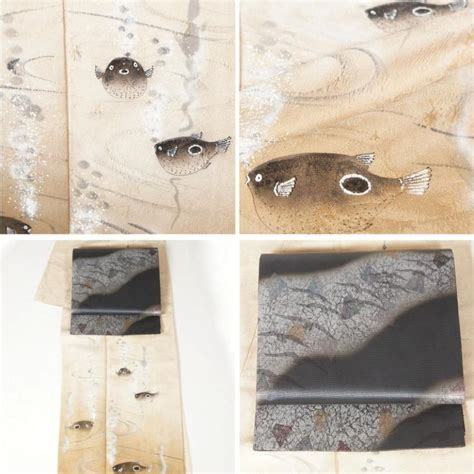
____ POISON MURDERS
Poisoning was certainly a thing is Japan since ancient times (see kodoku sorcery). Poisons were for example used in some fishing techniques.
I am pretty sure some kuge and buke were disposed of this way - even thought poison was seen as a coward weapon (hence why its supposed to be only used by shinobi/ninja - even if this "fact" is opened to a lot of discussions!).
During Edo period, such murders made up the news and penny dreadful-like illustrated books favored by city dwellers in need of a fright. But those stories didn't pass to posterity beside cheap ukiyoe plates, and were never as popular as some shinjû (double suicides) or ghost revenges like poor poisoned and murdered Oiwa's:
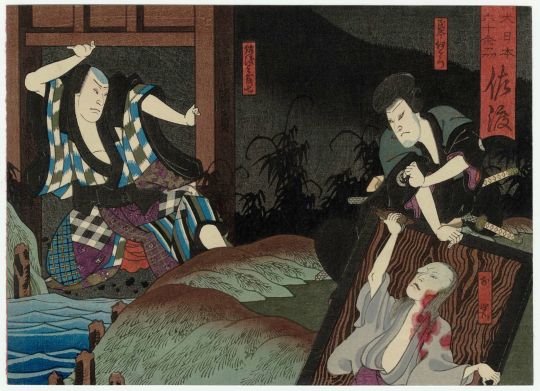
____ SUPERNATURAL POISONINGS
If your poison is both physical and metaphorical illbeing, mushi could be your guys ^^ This term actually covers everything small and crawling, from real worms and insects, to anything inside one's body causing distress - be it a parasite, an unknown illness, an overboard emotion, a curse etc. If you've read/seen Mushishi you've got what I mean:
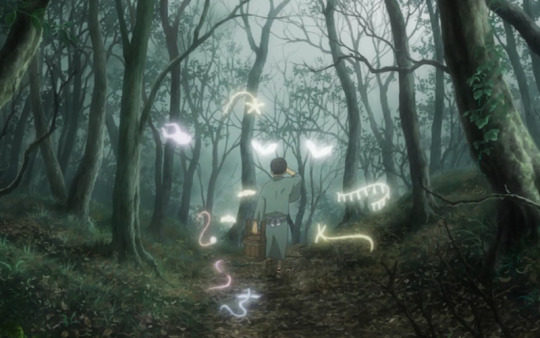
In fact any illness-causing being could count as poison-bringer. Hôsôkami (smallpox demon) was truly feared by all before vaccination was introduced in Japan.
Finally, continuing the supernatural poisoning trail, best girl is probably legendary fox witch Tamamo no Mae who among other terrible deeds made emperor Konoe fall sick with poisonous miasma (some version of the story attributes the disease to another monster, the nue). I covered a similar murderous kitsune folktale here.
#ask#japan#japanese history#dye#pattern#motif#poison#venomous#illness#natural dye#aniline dye#mordant#pigment#kujaku#peacock#mukade#centipede#omukade#youkai#snake#hebi#mamushi#habu#benzaiten#fugu#mushi#insect#mushishi#Hôsôkami#smallpox demon
109 notes
·
View notes
Text
More natural dyes for refrence

#game of thrones#asoiaf#asoif/got#a song of ice and fire#house of the dragon#headcanon#fashion#hotd#asoiaf books#asoiaf fandom#got fandom#got fashion#natural dye#medieval#medieval dyes#medieval fashion#art reference
673 notes
·
View notes
Text
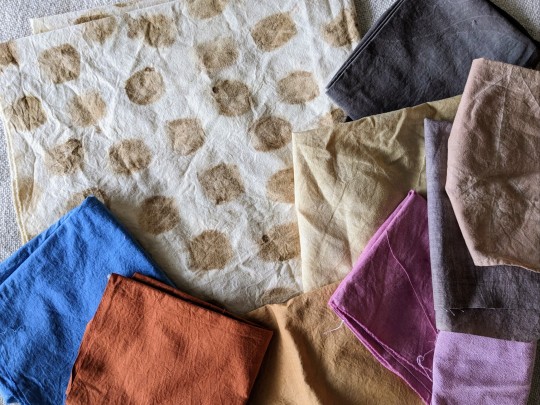
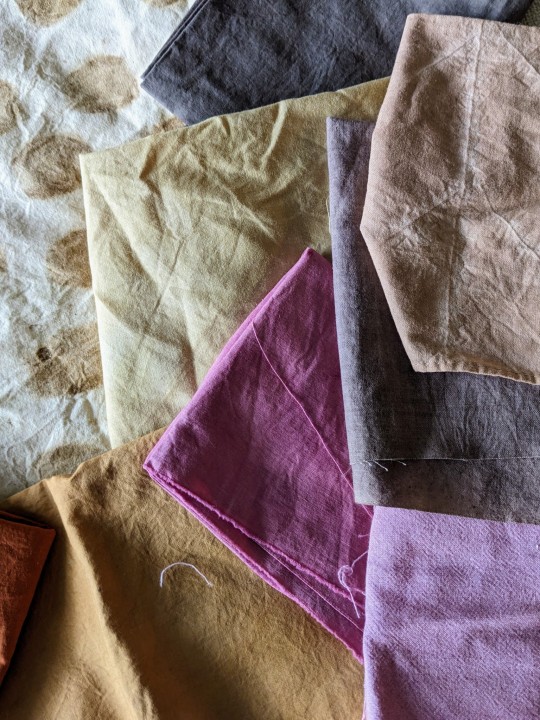
naturally dyed cloth samples 🩷
179 notes
·
View notes
Text
Wanted to wash the bag that was holding my handspun linen summer blanket project from last year and ended up taking it out and now I'm working on it. It is using very thick needles which, if I knit very slowly, is not too bad on my wrists. Which means I have something to work on again while I'm unable to finish my current projects.
I also have finally started on dyeing it. Originally I was going to dye the entire blanket with Oregon grapes, but now I am just dyeing the last skein and a half, which I think is much more reasonable.
Scoured the skeins and have them in the sun to bleach a little. Currently cooking year old frozen Oregon grapes. We shall see the dye capabilities of them
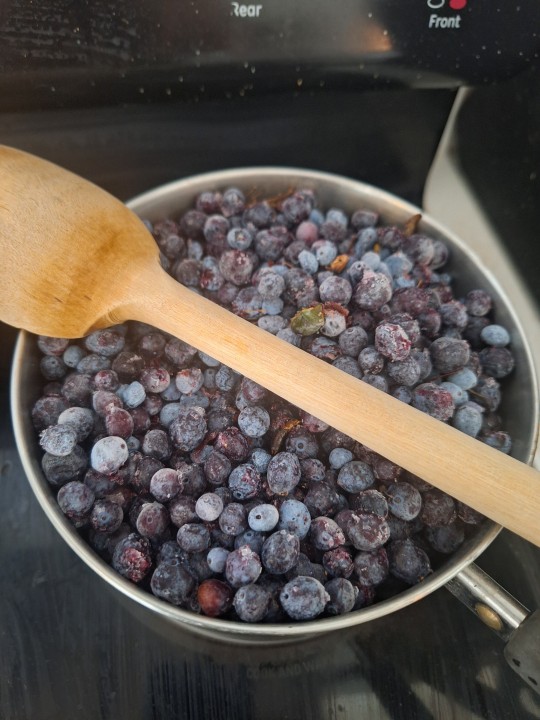


64 notes
·
View notes
Text

今度は緑。
帯を織ってから、続きでショールを織ります。
My next warps are green...I'm going to weave obi and a shawl.
228 notes
·
View notes
Text
New skill unlocked: dyeing with onions
Shout out to @milkweedman, the posts you always make an share about your dyeing efforts make it feel way less daunting starting! You're a star and I wouldn't have done this without your blog posts.

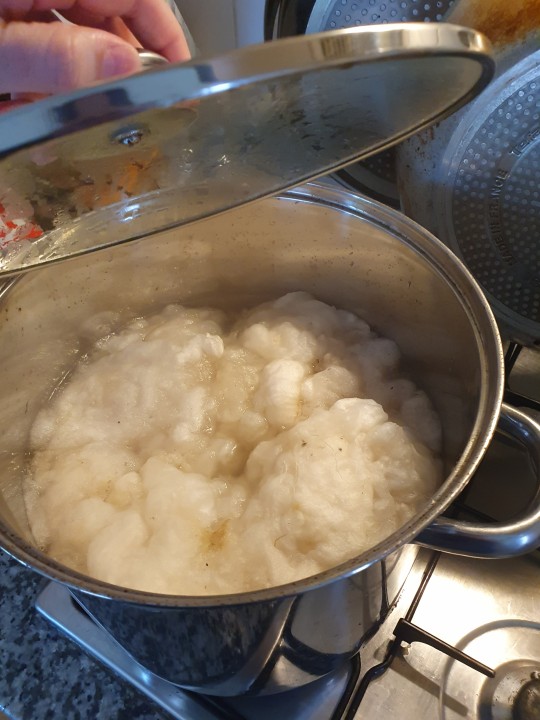
Brown onion skins, so many skins tbh. I boiled them for a 2-3 hours, and left them to cool in the water. Made such a rich red coloured water!
Alum mordant for the merino, was actually super easy. I did 15-20% of the weight of the fleece, worked a charm.
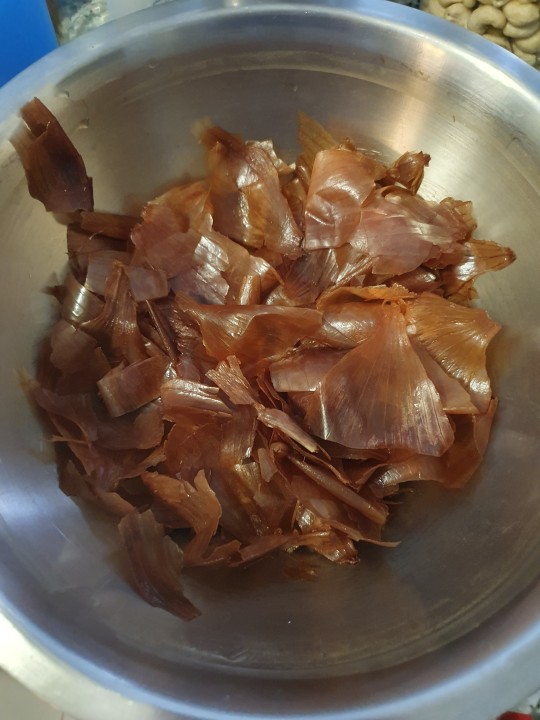
The onion skins did not go translucent, so after all the dyeing I chucked them back in the exhaust pot and left them to simmer some more.
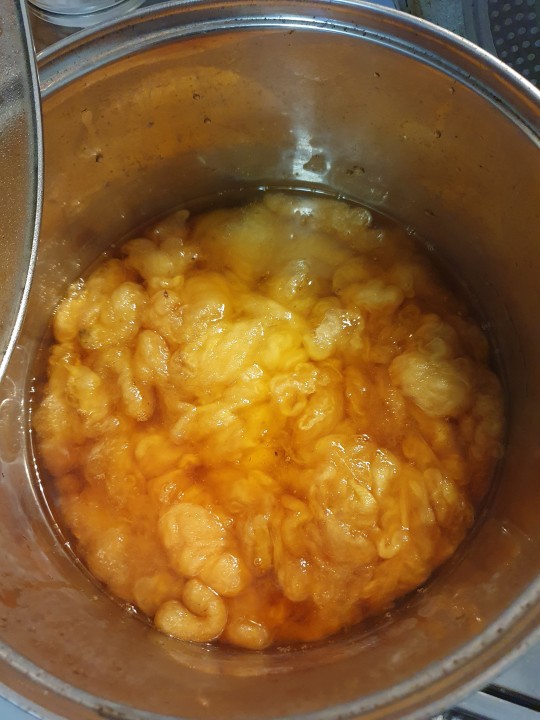
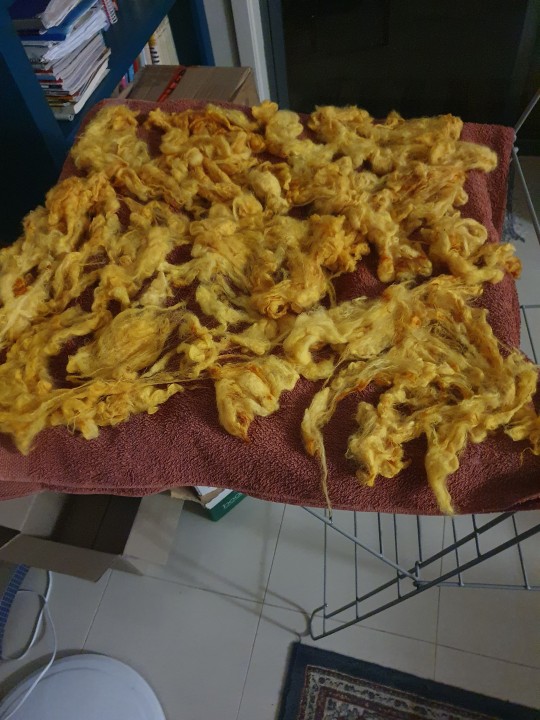
The yellow was so immediately bright and vibrant on the wool. I cooked it for an hour and left it to sit for several more. But the water was staining my fingers, which I didn't expect!
And it came out so wonderful and rich and saffron yellow!
Going to strain and decant rhe leftovers for use another day, and avocado pits are up next!
101 notes
·
View notes